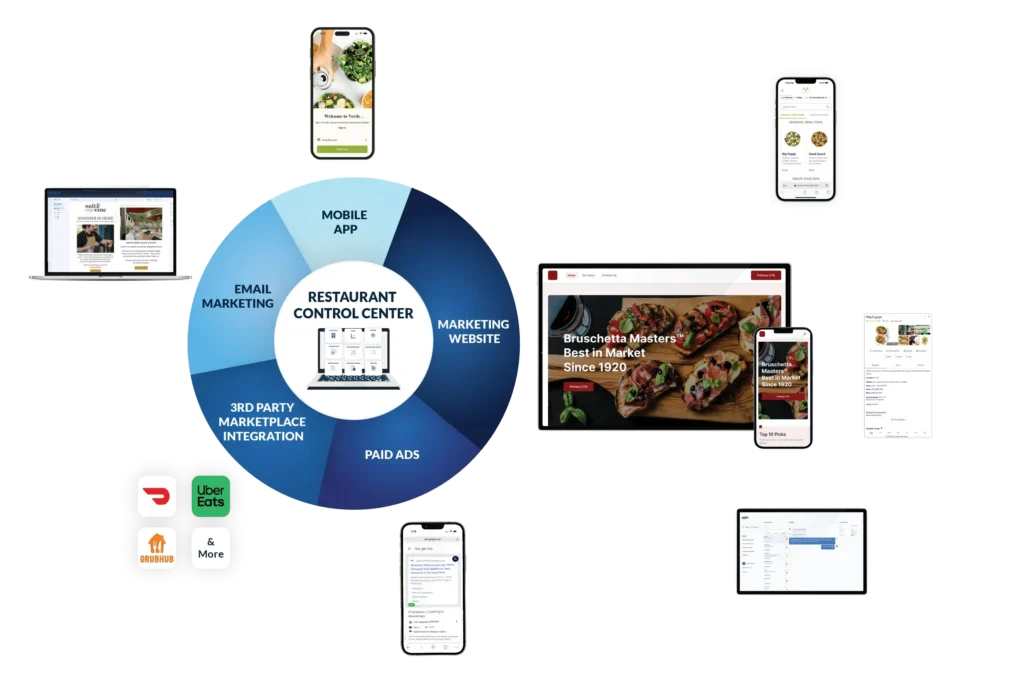Introduction
The Chowly Platform:
Your Off Premise Operating System
you grow smarter and stay in control.

How the Chowly Platform Powers Off Premise Success:
Optimized Digital Storefront
Keep menus, hours, and listings accurate to drive more online traffic.
Smart Ordering & Integration
Eliminate tablet clutter by syncing third-party orders directly to your POS.
Automated Marketing & Engagement
Run Google and Meta ads, manage reviews, and build repeat business.
Performance Tracking & Attribution
See where your orders come from and make informed, data-driven decisions.
Your Digital Storefront:
First Impressions Drive Sales
- The fastest-growing brands invest in their digital storefront as much as their physical location.
- Foot traffic is now both physical and digital.
- Discoverability matters more than design — if they can’t find you, they won’t order.
- “Perfect” is the enemy of “good.”
- Your marketing website and Google Business Profile are your storefront.
- Stay consistent across Google, Yelp, and other major platforms.
- Engage guests with reviews, photos, and up-to-date information.
- Match your online and in-store experience for better conversion.


- Don’t drive traffic until operations are ready.
- Finalize menu items and recipes.
- Train your staff for consistent, high-quality service.
- Monitor ratings and reviews to stay proactive.
The Real How-To: Mastering Off Premise
Profitability with the 3C's Framework
- A complete off-premise strategy needs all three steps working together.
- Most restaurants are already doing parts of this — the goal is to optimize the full system.
- Maximize incremental sales and profit by connecting the dots.
1. Creating Demand
- Drive traffic with strategic ads, SEO, and listings.
- Boost visibility through targeted branding and location campaigns.
- Use attribution to track what delivers the highest ROI.
Pro tip: Run a small branded keyword campaign daily to track brand searches and customer interest.
- Google Business Profile
- Paid Ads
- Customer Surveys
- Ratings and Reviews
2. Capturing Demand
- First-Party Ordering: Maximize profits with commission-free orders and custom upsells.
- Third-Party Ordering: Use delivery apps to supplement demand with full POS integration.
- First-Party Online Ordering
- Third-Party Marketplace Integration
- Marketing Website
- Mobile App
3. Converting Demand
- POS Integration: Route all orders through your kitchen the same way, no matter the source.
- Repeat Business: Loyalty programs and email marketing keep customers coming back.
- Dynamic Pricing: Automatically adjust delivery app pricing to protect profitability.
- Dynamic Pricing
- POS Integration
- Email Marketingon
Why the Chowly Platform Matters
- Built for independents with powerful tools in a simple dashboard.
- Connects online ordering, marketing, and POS for full visibility.
- First to market with third-party integrations like Grubhub.
Real Chowly Platform Success
Liv’s Juice & Acai Bar
• +17% increase in first-party sales
• $121,000 saved in third-party commissions
• 3x increase in website traffic
Sauce Nouvelle
• +45% increase in average daily order volume
• +10% increase in average basket sizes
• $6,455 saved in third-party commissions
Two Eggs!
• 35%+ increase in sales volume
• 18,000 orders processed with a 98% success rate
• 20%+ increase in average basket size
Maximize Return on Time (ROT)
- Automate listings, menu updates, and hours across digital storefronts
- Eliminate low-impact backend tasks
- Focus on high-impact projects that grow your business
- Reinvest time into food, service, and scaling your brand
Conclusion:
